Bedlam burials: Skeletons removed at Liverpool Street
- Published
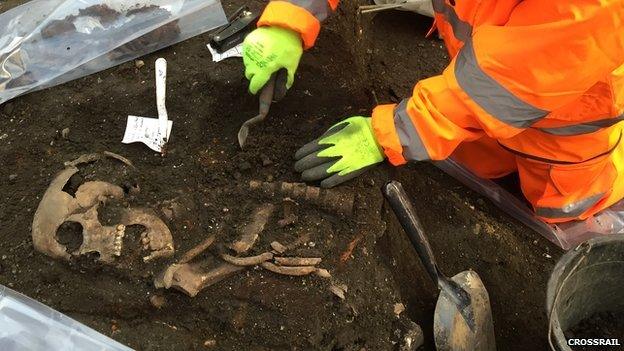
The burial site was used from 1569 to at least 1738 and includes bodies belonging to victims of the plague
Excavations of up to 3,000 skeletons which archaeologists say offer a glimpse into a fascinating phase of London's history are under way.
The Bedlam burial ground under Liverpool Street is a site that will serve the cross-London Crossrail line.
It was used from 1569 to at least 1738 and includes bodies belonging to victims of the Black Death.
Tests on excavated victims will further the understanding of the evolution of the plague's bacterial strain.
Tim Muffett has a look round the archaeological site at the Bedlam burial ground
A team of 60 archaeologists will work six days a week to remove skeletons and carefully record evidence of what may prove to be, in archaeological terms, London's most valuable 16th, 17th and 18th Century cemetery site.
Crossrail lead archaeologist Jay Carver said: "This excavation presents a unique opportunity to understand the lives and deaths of 16th and 17th century Londoners.
"The Bedlam burial ground spans a fascinating phase of London's history, including the transition from the Tudor-period city into cosmopolitan early-modern London."
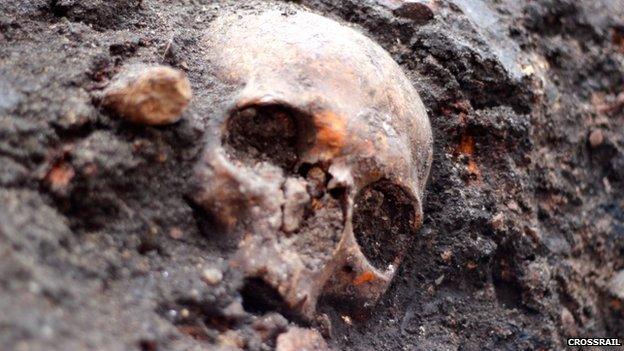
More than 400 skeletons and numerous artefacts have previously been uncovered
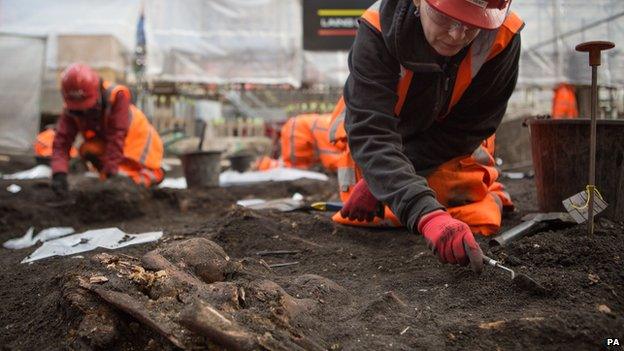
Archaeologists say the skeletons offer a glimpse at a "fascinating" period in London' history
The skeletons will be excavated over the next four weeks, after which archaeologists will dig through medieval marsh deposits and Roman remains. The remains will eventually be reinterred in a field in Essex.
Niamh Carty, a osteo-archaeologist working on the site, said the age, sex and stature of the people buried in the site will be investigated.
"It's a kind of act of remembrance in a way, that their mortal remains are giving us information," she added.
A Roman road runs under the site, which has yielded several artefacts such as horseshoes and cremation urns.
'Unique opportunity'
Archaeologists are expected to finish on site in September, after which construction will proceed on a new eastern ticket hall.
To date, Crossrail archaeologists have unearthed more than 10,000 artefacts spanning many years of London's past across more than 40 construction sites.
It is the UK's largest archaeology project.
Preliminary excavations at the Liverpool Street site in 2013 and 2014 have already uncovered more than 400 skeletons and numerous artefacts.
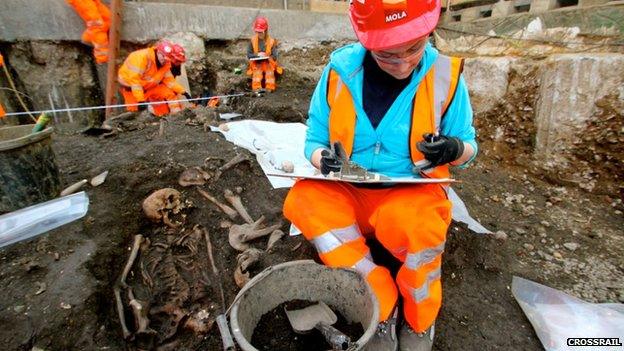
A new ticket hall will eventually be built on the site
- Published9 February 2015
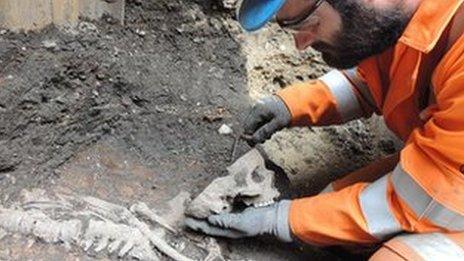
- Published3 July 2014
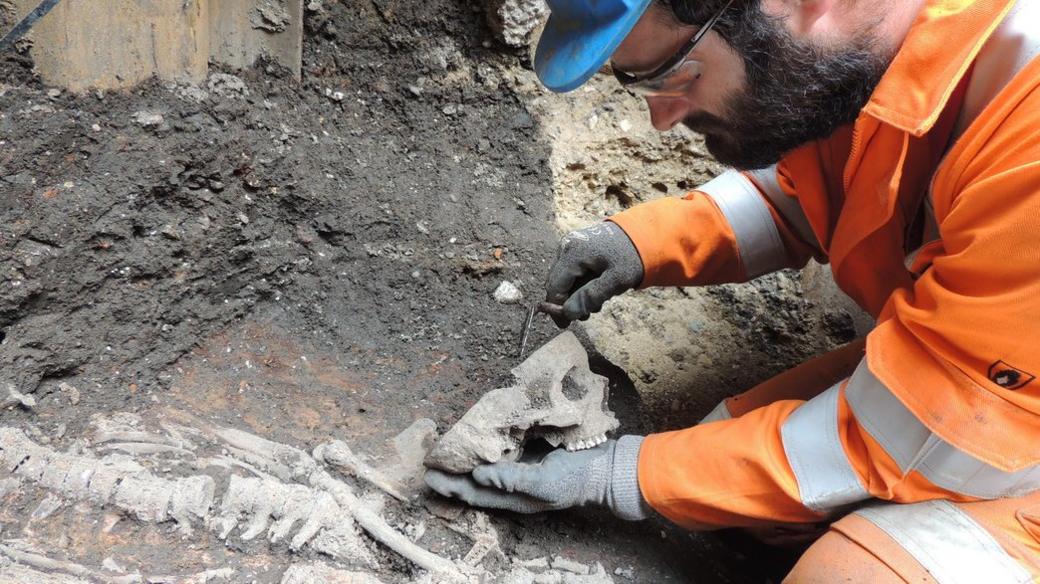
- Published2 October 2013
.jpg)